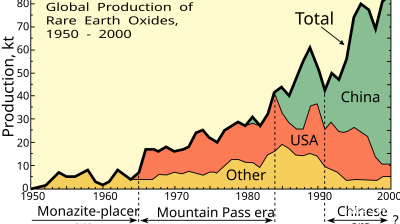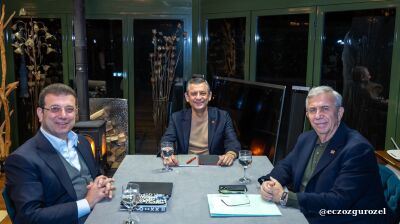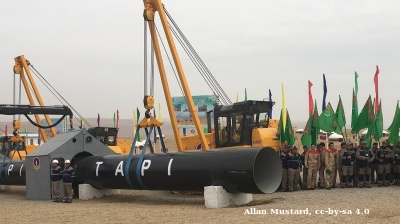This outlook is part of bne IntelliNews' annual series of reports looking ahead to what 2023 holds for the countries in our region. Read the full report here or download the pdf at the bottom of the article.
The war in Ukraine had a seismic effect on the security, political and economic landscape of Southeast Europe. It is just across the border for Moldova and Romania and in the near neighbourhood for most of Southeast Europe.
Fears of a spillover into the region were not realised in 2022, but there are still concerns that Russia could seek to embroil Moldova — part of which is controlled by Russia-backed separatists — in the war, or to cause tensions to overflow in existing hotspots such as northern Kosovo or Bosnia’s Republika Srpska.
Moldova is the only country in the region facing a potential military threat from the war. Ever since the invasion in February there has been speculation that Russia might push through from Ukraine to the separatist republic of Transnistria in Moldova, or that Moldova itself might be dragged into the war.
This has not happened, mainly as a result of Chisinau’s caution — it has not imposed sanctions on Russia despite moving closer to the West during 2022 — and because of the efforts by both Chisinau and Tiraspol to ensure that the conflict between the two sides of the country does not escalate. However, towards the end of the year tensions increased as cuts in deliveries of Russian gas put the squeeze on both Moldova proper and Moscow-backed Transnistria.
Most of the other countries in the region are either Nato members or aspiring members. The Nato presence has been stepped up in countries like Romania that are on the Alliance’s Eastern Flank.
Western Balkan flashpoints
Other security issues facing the region are internal, though some of these divisions have been amplified by the conflict further east.
At the beginning of 2022, EU foreign policy chief Josep Borrel identified Bosnia & Herzegovina as one of the two most critical flashpoints in Europe, along with Ukraine. The international security presence in both Bosnia and Kosovo was stepped up after Russia’s invasion of Ukraine over fears Moscow might destabilise one or both of the volatile situations in the Western Balkans.
In Bosnia, Milodad Dodik, president of the country’s Serb entity Republika Srpska, has been loudly repeating threats that the entity will secede from Bosnia for years. However, fears that a more serious
attempt to secede might be made in 2022 — possibly at the instigation of Dodo’s political ally Russian President Vladimir Putin — did not materialise.
Additional tensions came from the actions of the international community’s high representative in Bosnia, Christian Schmidt, whose high-handed decision to change the electoral rules on October 2 — election day in Bosnia — drew widespread condemnation from within and outside the country.
On the other hand, Bosnia was drawn closer into the Western camp in December when it was given long-awaited EU candidate status, despite the sluggish pace of reform resulting from repeated political deadlocks. Another positive development was the unusually speedy formation of new governments at state and entity level following the October elections.
Standoff in northern Kosovo
The other major security flashpoint in the Southeast Europe region in northern Kosovo, where the situation deteriorated dramatically in the second half of 2022. A standoff was triggered by the mundane but politically sensitive issue of car number plates; the Kosovan government required that cars across the country including the mainly ethnic Serb northern Kosovo have number plates with the RKS code rather than the old neutral status KS.
Tensions over the issue led to mass protests, road barricades and a walkout of state institutions by ethnic Serb officials. The situation was only eased right at the end of 2022, under heavy pressure from the EU and the US. However, the situation remains volatile and the next crisis point is expected to be reached in April, when local elections to replace officials that quit in 2022 are due to take place.
Between Russia and the West
Even where there was no security threat, the war in Ukraine and the new geopolitical situation added to existing tensions and created new political rifts in a number of countries in the region. In much of Southeast Europe, even some EU members, the question of whether to steer Westwards or maintain a close relationship with Russia remains open.
This has become problematic for Serbia, where President Aleksander Vucic has continued with his long-standing policy of seeking friendly relations with both Russia and the West, as well as China. This has served the country well in the past, but post-invasion Belgrade has
been under heavy pressure to join sanctions on Russia. So far, the Serbian government has refused to do so because of Belgrade’s long-standing relations with Russia as well as Moscow’s backing over the Kosovo issue.
This has damaged Serbia’s standing with the West and led to calls from MEPs and other European politicians for Serbia’s EU accession process to be frozen. Moving into 2023 there seems no immediate prospect of a change of stance by Belgrade; such a step would be highly difficult politically given the loud pro-Russian voices within Serbia.
Moldova has long had a highly polarised political landscape. The landslide victories of President Maia Sandu and her Party of Action and Solidarity, in 2020 and 2021 respectively, looked set to propel the small country on a Western course. However, despite notable steps such as securing EU candidate status, Sandu’s promised reforms have foundered amid the country’s pressing economic problems.
The window for Sandu and her PAS to make long-lasting reforms on issues such as corruption and the rule of law is closing as elections loom in 2024 and 2025 that may see the return to power of the pro-Russian Socialists or parties tarnished by corruption such as the Democratic Party or Shor Party. 2023 will be critical in this regard. The PAS’ government is already under heavy pressure from regular mass anti-government protests organised by the Shor Party.
Power vacuums
Orientation vis a vis Russia and the West also emerged as a new rift in Bulgarian politics ahead of the October 2022 general election. This delivered a fragmented new parliament and the loose alliance that had previously been working to tackle corruption — the reformist Change Continues and Democratic Bulgaria together with the Bulgarian Socialist Party and President Rumen Radev — collapsed, with the former firmly in the Western camp and the latter two taking a more pro-Russian tack.
Three months on from the general election there is little hope of a new government being formed — much less a reform-oriented one with the will and political capital to tackle corruption — and yet another snap election is expected in March.
A third country in political disarray is Montenegro, where efforts by a coalition of around 20 small parties to install a government under Demos leader Miodrag Lekic fell through in January. This followed a lengthy standoff with President Milo Djukanovic, who refused to give a mandate to Lekic. Early elections are now anticipated in March.
Progress on EU enlargement
EU enlargement is the common goal of the Western Balkan countries. With the war in Ukraine giving EU members a prod to embrace European countries outside the bloc, 2022 saw some of the biggest progress on enlargement in recent years. Not only did Albania and North Macedonia get the long-awaited nod to start accession talks, but EU members also extended candidate status to Bosnia, Moldova and Ukraine.
At the start of 2023, Croatia was admitted into both the Eurozone and the Schengen area, overtaking Bulgaria and Romania, which joined the EU six years earlier. Romania in particular plans to make a concerted effort to secure Schengen membership in 2023.
Overall, however, less action on EU integration is expected in 2023. North Macedonia’s government now has the politically difficult ask of getting unpopular constitutional amendments through Parliament for the country to progress with its accession talks. Meanwhile, of the two frontrunners in the process, Serbia’s progress appears stymied by its refusal to fall into line with EU foreign policy on Russia, and Montenegro’s by its political instability.
Romania had a relatively calm year politically, but 2023 is expected see the emergence of cracks in the grand coalition between the country’s two largest parties, the National Liberal Party (PNL) and Social Democratic Party (PSD). The first challenge will be the handover of the prime minister position from the PNL to the PSD. After that, as the super-election year of 2024 approaches, the two parties can be expected to assert their differences as they art to woo the electorate.
Economic crisis
All this is happening against the backdrop of the economic crisis caused by the war in Ukraine and related sanctions. The final months of the year saw the start of a slowdown as rampant inflation took its toll on companies and households.
For most of the region, growth continued relatively robustly in 2022, albeit slower than during the rebound from the coronacrisis in 2021. Three small Southeast European economies — Croatia, Montenegro and Slovenia — appear to have clocked up some of the fastest growth in the Emerging Europe area in 2022, helped by the recovery of international tourism, even though by the end of the year their expansion had started to slow.
The region’s largest economy, Romania, saw its growth decelerate slightly during 2022 but to a still robust 4.6% annual rate, from 5.1% in 2021. But it is expected to grow by only 2-3% in 2023 and to recover marginally towards growth rates of not much above 4% in the coming years.
Like other countries, Romania is affected by the recession in Europe; Germany and other Central and Western European countries are important markets for goods produced across the Southeast Europe region. Another factor for the EU members is the funding under the EU budget and under the Resilience Facility.
By contrast, it was a terrible year for Moldova, where the economy is expected to have contracted by 4% or more in 2022 — much worse than anticipated by the government, international financial institutions (IFIs) and independent analysts. Moldova experienced difficulties on multiple fronts — from disruptions to trade caused by the war in neighbouring Ukraine, lower demand from Western countries as inflation took its toll on spending and a poor harvest due to drought. Already one of the poorest countries in Europe, Moldovans’ standards of living have been eroded dramatically by inflation that soared to over 30%. On top of this, Moldova is still hosting tens of thousands of Ukrainian refugees.
Rampant inflation
While inflation in Moldova was exceptionally high, inflation across the region accelerated sharply during most of 2022 due the economic effects of the Russian war in Ukraine. It was also well into the double digits in Bulgaria, Romania, Serbia and some other countries.
This prompted central banks to hike rates across the board. In an early sign of the decrease in inflation expected in 2023, however, some countries have seen a modest slowdown in price growth in the final months of 2022.
With the hike in prices, the consumer spending that has been an important driver of growth in the past slowed as disposable incomes were whittled away.
It also had a damaging impact on tourism in Montenegro, where Prime Minister Dritan Abazovic warned early in the season that prices were as high as on France’s Cote d’Azur. Elsewhere in the region, however, rising prices across Europe benefited lower-cost destinations such as Albania, which saw a record season amid the arrival of thousands of bargain-seekers.
Debt ratios continued to decrease in 2022 after the hikes in borrowing and economic slumps during the pandemic. Debt had reached high levels in Albania, Croatia and Montenegro in particular. However, with the economic slowdown from late 2022, concerns have again been raised about the sustainability of Montenegro’s debt burden, and the threat to fiscal stability from the borrowing envisaged in 2023.
Input costs soar
The war and sanctions hit a variety of important sectors, including energy, grain and metals.
With much of the gas supplied to Southeast Europe coming from Russia, governments have been scrambling to diversify their sources, looking to alternative suppliers such as Azerbaijan. This prompted a speeding up of pipeline and other infrastructure projects.
Croatia’s strong performance so far has been down to a combination of its relative resilience to the energy crisis, thanks to a large extent to its construction of the offshore floating liquefied natural gas (FLNG) terminal on the island of Krk, and partly to the continued post-Covid rebound of its tourism sector. The FLNG terminal contributes to Croatia’s energy independence, and the country has ambitions to become an LNG hub for the region. Zagreb intends to double the capacity of the terminal from 2.9bn cubic metres to 6.1 bcm.
Romania is also seeking to develop its offshore gas resources in the Black Sea. BSOG has already started production in the Black Sea and will add 1 bcm of gas to the country’s depleting production (under 10 bcm per year) and OMV Petrom/Romgaz should begin production in 2027.
Serbia has benefited from its good relations with Russia, securing a new gas supply deal on favourable terms in spring 2021. Other countries have fared less well; Gazprom cut off Bulgaria’s supplies in April when former prime minister Kiril Petkov refused to pay in rubles, while deliveries to Moldova were cut in autumn 2022, apparently for political reasons, and there is considerable uncertainty about how much the country will receive, or even whether.
Metals industries across Europe were hit by the higher energy prices, with some announcing production cuts as prices started to rise post-pandemic but before the invasion of Ukraine. Among those affected in Southeast Europe are aluminium producers such as Romania’s Alro, Slovakia’s Slovalco and Talum in Slovenia, as well as KAP in Montenegro.
Agriculture has been hit by a double-whammy of higher prices of inputs, notably fuel and fertilisers, and drought linked to climate change. The worst drought in 500 years affected large parts of Europe in 2022, and droughts, flooding and other extreme climate events are only expected to increase in the coming years. Southeast Europe is seen as a climate change hotspot, with temperatures forecast to increase by well above the global average.
On a more positive note, as Southeast European states seek to diversify their energy mix numerous new renewables projects have been launched or are in the pipeline. This is despite a temporary increase in coal-fired power production prompted by high gas and electricity prices.
Features

Asian economies weigh their options amid fears of over-reliance on Chinese rare-earths
Just how control over these critical minerals plays out will be a long fought battle lasting decades, and one that will increasingly define Asia’s industrial future.

BEYOND THE BOSPORUS: Espionage claims thrown at Imamoglu mean relief at dismissal of CHP court case is short-lived
Wife of Erdogan opponent mocks regime, saying it is also alleged that her husband “set Rome on fire”. Demands investigation.

Turkmenistan’s TAPI gas pipeline takes off
Turkmenistan's 1,800km TAPI gas pipeline breaks ground after 30 years with first 14km completed into Afghanistan, aiming to deliver 33bcm annually to Pakistan and India by 2027 despite geopolitical hurdles.

Looking back: Prabowo’s first year of populism, growth, and the pursuit of sovereignty
His administration, which began with a promise of pragmatic reform and continuity, has in recent months leaned heavily on populist and interventionist economic policies.



